Wie kann ich mich konkret digitale bilden?
Jeder Einzelne sollte versuchen, E-Learning so zu nutzen, wie es für ihn am praktikabelsten ist. Der erste Schritt sollte darin bestehen, die Hauptprobleme zu ermitteln. Wenn Sie sich beim Surfen im Internet nicht wohl und sicher fühlen, sollten Sie zunächst nach Online-Kursen suchen, in denen Sie lernen, wie Sie sich in der Online-Welt sicher fühlen können und was nicht.
Um mit dem Online-Lernen zu beginnen, brauchen Sie nur ein Smartphone mit Internetzugang. Heutzutage ist es sehr einfach, auf Inhalte zuzugreifen, um alles zu lernen, was man will. Im Internet kann man mit einer einfachen Suche lernen, wie man kocht, neue Sprachen lernt, programmiert, schreibt, kurz gesagt, alles, was man will. Dank der Welt des Online-Lernens kann jeder Nutzer, unabhängig von seinem Erfahrungsstand, neues Material lernen oder bereits vorhandene Informationen vertiefen.
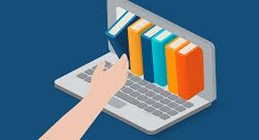 Sie sollten sich zunächst darauf konzentrieren und verstehen, was Sie lernen wollen, und dann versuchen herauszufinden, mit welcher Methode Sie sich am meisten identifizieren. Würden Sie es vorziehen, die Inhalte zu lesen, oder würden Sie es vorziehen, dass jemand sie Ihnen durch Videos erklärt? Würden Sie die Inhalte lieber durch Spiele oder durch Foren lernen, in denen Sie mit anderen Menschen chatten können?
Sie sollten sich zunächst darauf konzentrieren und verstehen, was Sie lernen wollen, und dann versuchen herauszufinden, mit welcher Methode Sie sich am meisten identifizieren. Würden Sie es vorziehen, die Inhalte zu lesen, oder würden Sie es vorziehen, dass jemand sie Ihnen durch Videos erklärt? Würden Sie die Inhalte lieber durch Spiele oder durch Foren lernen, in denen Sie mit anderen Menschen chatten können?
Sobald Sie diese Entscheidung getroffen haben, sollten Sie sich überlegen, was Sie lernen wollen und wie Sie es tun wollen. Wenn Sie z. B. ein Instrument lernen wollen, können Sie nach Videos suchen, die zeigen, wie es geht. Wenn Sie eine neue Sprache lernen wollen, können Sie nach Online-Spielen suchen, Apps auf Ihrem Smartphone installieren oder nach Videos suchen. Wenn Sie etwas Technisches lernen wollen, z. B. Programmieren, können Sie nach Online-Inhalten von Universitäten oder Fachschulen suchen.
Bei der Suche nach Inhalten sollten Sie sich auf vier Hauptpunkte konzentrieren:
- Verwendung verschiedener Formate: Suchen Sie nach verschiedenen Formaten und variieren Sie die Art und Weise, wie Sie den Inhalt erlernen. Auf diese Weise werden Sie mehr lernen, ohne dass es eintönig wird.
- Aktive Lernmöglichkeiten: Aktives Lernen ist viel effektiver als traditionelles Lernen, und Gamification ist eine der Zukünfte der Bildung. Sie sollten nach Spielen oder interaktiven Aktivitäten zu den Inhalten suchen, an denen Sie interessiert sind, da auf diese Weise das Lernen gefördert wird, ohne dass Sie es merken.
- Feedback: Es ist wichtig, nach Inhalten und Aktivitäten zu suchen, die Feedback fördern. So können Sie feststellen, wie Ihr Lernfortschritt ist und worauf Sie sich konzentrieren sollten.
- Interaktion: Interaktion ist auch einer der wichtigsten Punkte, um Wissen, Standpunkte und Diskussionen über verschiedene Themen auszutauschen. Sie sollten nach Inhalten oder Plattformen suchen, auf denen Sie mit anderen Studierenden interagieren können.
Plattformen für das Online-Lernen
YouTube
 YouTube ist eine Online-Plattform, auf der jeder Videos über das Internet teilen kann. Jeder Benutzer hat einen Kanal, in dem er Videos von allem, was er möchte, veröffentlicht. Auf dieser Plattform können Sie Inhalte zu fast jedem Thema finden. Über Kommentare können Sie mit anderen Lernenden oder mit den Urhebern der Inhalte interagieren. Manchmal finden Sie in der Beschreibung eines Videos Links zu weiteren Inhalten oder Übungen.
YouTube ist eine Online-Plattform, auf der jeder Videos über das Internet teilen kann. Jeder Benutzer hat einen Kanal, in dem er Videos von allem, was er möchte, veröffentlicht. Auf dieser Plattform können Sie Inhalte zu fast jedem Thema finden. Über Kommentare können Sie mit anderen Lernenden oder mit den Urhebern der Inhalte interagieren. Manchmal finden Sie in der Beschreibung eines Videos Links zu weiteren Inhalten oder Übungen.
Google Digital Garage
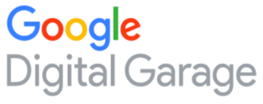 Google Digital Garage bietet eine Reihe von Kursen zu verschiedenen Inhalten an, die die persönliche Entwicklung fördern. Diese Kurse sind kostenlos und bieten manchmal sogar die Möglichkeit, ein Zertifikat zu erwerben. Die Inhalte sind einfach und werden auf unkomplizierte Weise vermittelt. Außerdem müssen Sie am Ende des Kurses einige Übungen machen, um zu überprüfen, ob Sie den Inhalt verstanden haben. Diese Kurse können überall und von jedermann besucht werden. Sie sind über den folgenden Link erhältlich: https://learndigital.withgoogle.com/atelierdigitalportugal/courses
Google Digital Garage bietet eine Reihe von Kursen zu verschiedenen Inhalten an, die die persönliche Entwicklung fördern. Diese Kurse sind kostenlos und bieten manchmal sogar die Möglichkeit, ein Zertifikat zu erwerben. Die Inhalte sind einfach und werden auf unkomplizierte Weise vermittelt. Außerdem müssen Sie am Ende des Kurses einige Übungen machen, um zu überprüfen, ob Sie den Inhalt verstanden haben. Diese Kurse können überall und von jedermann besucht werden. Sie sind über den folgenden Link erhältlich: https://learndigital.withgoogle.com/atelierdigitalportugal/courses
Domestika
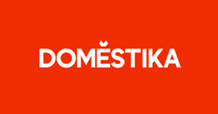 Domestika ist eine Online-Plattform, auf der kreative Menschen ihr Wissen und ihre Fähigkeiten in professionellen Kursen weitergeben. Diese Plattform ermöglicht es Ihnen, sich auf kreative Bereiche zu spezialisieren oder Ihre Fähigkeiten in Ihrem Lieblingshobby zu erweitern. Auf der Plattform können Sie die Videos ansehen, herunterladen und ansehen, wo und wann Sie wollen. Der Ton und die Untertitel sind in mehreren Sprachen verfügbar.
Domestika ist eine Online-Plattform, auf der kreative Menschen ihr Wissen und ihre Fähigkeiten in professionellen Kursen weitergeben. Diese Plattform ermöglicht es Ihnen, sich auf kreative Bereiche zu spezialisieren oder Ihre Fähigkeiten in Ihrem Lieblingshobby zu erweitern. Auf der Plattform können Sie die Videos ansehen, herunterladen und ansehen, wo und wann Sie wollen. Der Ton und die Untertitel sind in mehreren Sprachen verfügbar.
Duolingo
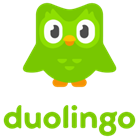 Duolingo ist eine Plattform, die in mobilen Anwendungen und über eine Website zum Sprachenlernen verfügbar ist. Auf dieser Plattform ist es möglich, Sprachen einfach zu lernen. Das Lernen erfolgt durch Übungen, die aus Leseverstehen und einfachen Gesprächen bestehen. Während der Übungen erhalten Sie Feedback und steigen je nach erworbenem Wissen in die nächste Stufe auf.
Duolingo ist eine Plattform, die in mobilen Anwendungen und über eine Website zum Sprachenlernen verfügbar ist. Auf dieser Plattform ist es möglich, Sprachen einfach zu lernen. Das Lernen erfolgt durch Übungen, die aus Leseverstehen und einfachen Gesprächen bestehen. Während der Übungen erhalten Sie Feedback und steigen je nach erworbenem Wissen in die nächste Stufe auf.
Neben dieser Plattform gibt es ähnliche Plattformen zum Erlernen neuer Sprachen, wie Busuu und Kultivi.
Coursera
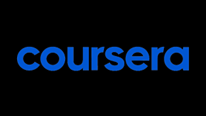 Coursera ist eine Online-Plattform, die Kurse anbietet, die in der Regel spezialisierter sind, aber für jeden zugänglich. Die Kurse auf dieser Plattform stammen von Universitäten oder zertifizierten Einrichtungen. Die Kurse werden vollständig online absolviert und nach Abschluss kann man ein Zertifikat erhalten. Darüber hinaus werden die Studierenden auch Wissenstests unterzogen, um ihren Lernfortschritt zu überprüfen.
Coursera ist eine Online-Plattform, die Kurse anbietet, die in der Regel spezialisierter sind, aber für jeden zugänglich. Die Kurse auf dieser Plattform stammen von Universitäten oder zertifizierten Einrichtungen. Die Kurse werden vollständig online absolviert und nach Abschluss kann man ein Zertifikat erhalten. Darüber hinaus werden die Studierenden auch Wissenstests unterzogen, um ihren Lernfortschritt zu überprüfen.
Neben Coursera gibt es weitere ähnliche Plattformen wie EdX und Udemy. Auch einige Universitäten bieten bereits vollständige Online-Kurse an, die für jedermann zugänglich sind.
Oben wurden einige der am häufigsten genutzten Plattformen für das Online-Lernen genannt. Durch eine einfache Suche in einer Suchmaschine können Sie jedoch unbegrenztes Wissen erlangen. Sie sollten immer darauf achten, dass Sie sich beim Online-Surfen gut verhalten, um Gefahren in der Internetwelt zu vermeiden.
